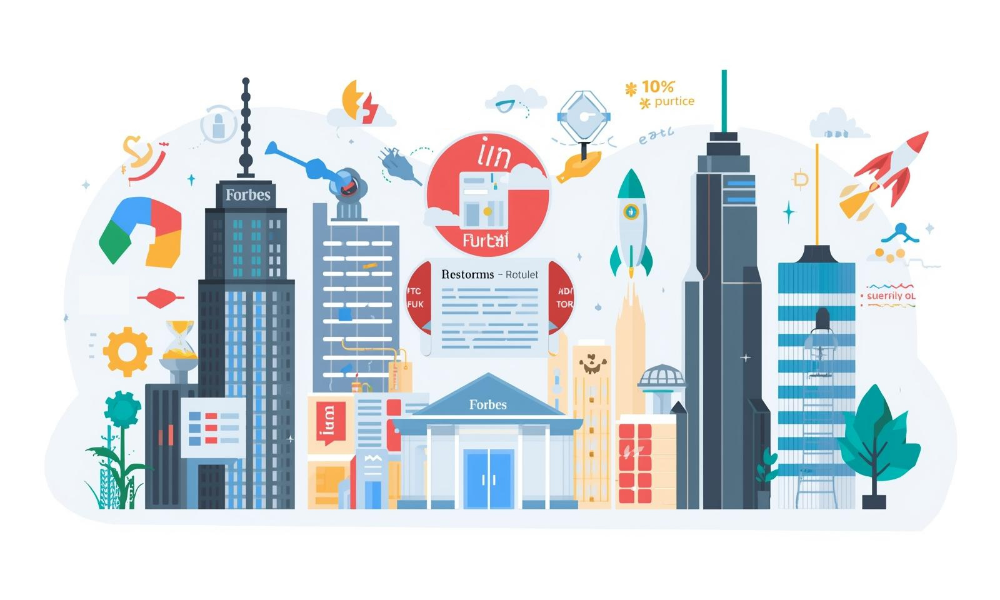In the fiercely competitive world of business, getting featured in a major, top-tier publication like Forbes, Inc., or Fast Company is the gold standard. It’s not just a nice-to-have; it’s a game-changing event that can dramatically elevate a brand’s credibility and open doors to opportunities previously out of reach.
While it may seem like an impossible feat reserved only for the C-suite of billion-dollar corporations, the reality is that securing a top-tier feature is a strategic, methodical process, not a matter of luck. It’s a blend of art and science, and mastering it can catapult an ambitious entrepreneur or executive from an unknown to a recognized industry leader almost overnight. It’s about moving from being a market participant to a market authority.
I could not begin to explain how overrated some “top-tier” publications are – and how they have failed to keep up with a longtail of outliers that helped some of the most important people in the world turn the tide on information, propaganda and PR. However, it is worth considering a small mix of top-tier outlets in your footprint:
The Strategic Value of a Single Top-Tier Feature
Many business leaders and marketing professionals wonder whether to invest their resources in a single, high-impact feature or a steady stream of smaller mentions. A study we conducted with 1,800 CMOs sheds powerful light on this debate. A significant 69% of them credited a single top-tier feature with sparking new partnerships, attracting new talent, and significantly boosting investor confidence. This stands in contrast to the 31% who believed that steady, mid-tier coverage drove better results. This isn’t to say that consistent coverage isn’t important—it is, and it builds long-term authority. But the research points to the undeniable, catalytic power of a single, well-placed feature in a major publication. It acts as a powerful catalyst, creating a ripple effect of credibility that can lead to strategic alliances, unprecedented investor interest, and a surge in high-quality, organic leads. It provides a level of validation that a hundred smaller mentions often cannot replicate.
Understanding the Journalist’s Mindset: It’s Not About You
The first and most critical step in this entire process is to reframe your thinking. Journalists at top-tier publications are not waiting for a pitch about your latest product launch, your funding round, or your company’s anniversary. They are looking for a story that is genuinely newsworthy, provides unique value to their audience, and helps them do their job. As Claire Brucher, a respected PR expert, has often noted, a sales-y or marketing-heavy pitch is a quick way to get your email deleted and your article rejected. The story must be story-first, brand later. It needs a strong hook, unique and compelling data to back it up, and a clear, actionable takeaway for the reader. They are looking for a story that will generate traffic and engagement, not a thinly veiled advertisement.
Crafting a Compelling, Data-Driven Narrative
So, what makes a story worthy of a Forbes or Inc. feature? It’s almost always built on a foundation of unique, compelling data or a groundbreaking insight. For example, a pitch about your company’s new AI software isn’t likely to land in a major business publication. But a pitch that reveals a surprising trend about AI adoption among small businesses, based on your proprietary data, is far more likely to get noticed. Providing original research or an insightful perspective on a relevant, timely topic is the single most effective way to position yourself as an authority. This transforms you from a product pusher to a valuable source of information, a strategic partner to the journalist, and a trusted voice for their readers. This is the difference between a one-off placement and becoming a go-to source.
The Power of Exclusive Content and Thought Leadership
Major publications thrive on exclusive content. Offering a journalist an exclusive look at your groundbreaking research or your unique perspective on an industry trend is a powerful incentive that can secure a feature that might otherwise be overlooked. This isn’t about giving away your intellectual property; it’s about building a reputation as a thought leader. The more you are seen as an expert who can provide valuable, unique insights, the more journalists will start coming to you for quotes, interviews, and features. This is the difference between reactive PR, where you’re constantly chasing a story, and proactive personal branding, where the story comes to you. It establishes you as an authority, a “brand entity” that search engines and journalists alike recognize and trust.
Building Relationships (the Human Way) in a Digital World
In the age of automated outreach and mass email blasts, genuine human connection still reigns supreme. While it’s tempting to send a generic pitch to hundreds of journalists, the most successful features often come from established, personal relationships. That doesn’t mean you need to be best friends with an editor at Forbes. It means doing your homework. Follow a journalist on LinkedIn or X (formerly Twitter), comment thoughtfully on their articles, and show them that you are a thoughtful reader who understands and respects their beat. A pitch that feels like it was written just for that specific journalist, and that acknowledges their recent work, is a hundred times more likely to get a response than a generic template. It shows you’ve done your homework and are not just another brand looking for a handout.
From Feature to Foundation: Leveraging Your Placement for Maximum ROI
Once you’ve secured that top-tier feature, the work isn’t over—it’s just beginning. A feature is not a destination; it’s a launchpad. You must actively leverage it to maximize its value. This means promoting it across all your owned channels (social media, newsletters, website), adding the publication’s logo to your homepage and marketing materials, and including it in your email signature. This is how you convert a single moment of validation into a lasting foundation of brand authority. It’s the kind of social proof that can dramatically shorten sales cycles, boost investor confidence, and attract top-tier talent. This is the difference between a fleeting win and a permanent business asset.
The Strategic Investment in Top-Tier Exposure
Ultimately, landing a feature in a major publication is a strategic investment in your brand’s future. It’s about securing a form of third-party validation that can’t be replicated with advertising spend alone. It’s a statement to the world that your business and your leadership are credible, newsworthy, and worthy of attention. While the path to a top-tier feature requires effort and a deep understanding of what journalists want, the payoff in terms of brand equity, trust, and business opportunities is immeasurable. It is, quite simply, one of the most effective and powerful forms of modern marketing.
Ready to unlock your brand’s full potential and secure the kind of top-tier features that can transform your business? It’s time to move beyond the tedious, manual work of pitching into the void and embrace a smarter, more results-oriented approach to digital PR. It’s about securing placements with accountability and a clear return on investment. Sitetrail’s NewsPass is the “done-for-you” solution that provides a guaranteed path to getting your story featured in respected news publications.
To learn more about how we help businesses just like yours get consistent, high-quality media mentions and build a strong brand reputation, the following service won’t land you in Forbes, but it will get you into the kind of longtail media that helped presidents win elections: Sitetrail’s Newspass
To have something more bespoke and hard-hitting for faster results, you need to look at our Accelerated PR Plan today.









